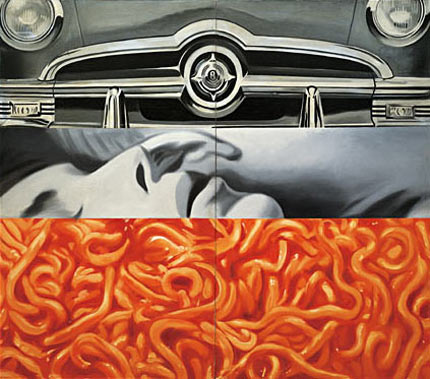I went through some of my old sketches from high and found one of my random doodles from class and thought that it would be perfect to put t on a canvas.
The main concept behind the painting is a graphic portrait. I hid different qualities of my life within the whole design, including writing, running, piano, and art. I am pleased with the way it turned out. This was my first time working with this size but it was a really good experience because now I know what works and what doesn't. I will definitely go back and make this painting and make it even stronger. I plan on continuing painting in this style and experimenting some more. Who knows maybe one day in a few years I'll have an exhibit somewhere...



